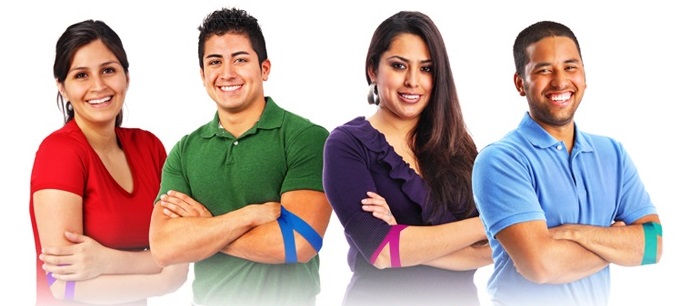
The mission of Inova Blood Donor Services is to provide a safe and adequate blood supply for the patients in our diverse community we serve.
Having a donor population that matches our patient population is essential to reducing the risk of further complications.
Hispanics, Asians and African Americans often have rare compatibility traits in their blood that are unique to their ethnicity. Therefore, optimal blood matches for our diverse patients may often come from donors with a compatible ethnic background.
Did You Know? Individuals with sickle cell trait (not sickle cell anemia) are eligible to donate.
Many individuals of African American, Asian or Hispanic heritage have, or know someone who has, been affected by sickle cell anemia, an inherited disease that affects the red blood cells that causes serious infections and can also be very painful.
Sickle cell patients rely on an average of 15-25 blood transfusions per year. Depending on the severity of the disease, that number could be even higher. Without a blood transfusion that contains compatible traits, the patient can develop antibodies and build a tolerance to the blood they receive, which could lead to further complications and additional transfusions over the patient’s lifetime.
Sickle Cell Trait (genotype HbAS) vs. Sickle Cell Anemia (genotype HbSS)
Sickle Cell Trait (genotype HbAS)
Individuals who inherit one sickle cell gene and one normal gene have sickle cell trait. People with Sickle Cell Trait usually do not have any of the symptoms of sickle cell anemia, but they can pass the trait on to their children.
Donors with Sickle Cell Trait are eligible to donate provided that they feel well and healthy on the date of their donation.
Learn more about Sickle Cell Trait (CDC)
Sickle Cell Anemia (genotype HbSS or HbSC)
Sickle Cell Anemia is a group of inherited red blood cell disorders. Red blood cells contain hemoglobin, a protein that carries oxygen. Healthy red blood cells are round, and they move through small blood vessels to carry oxygen to all parts of the body. In someone who has Sickle Cell Anemia, the hemoglobin is abnormal, which causes the red blood cells to become hard and sticky and look like a C-shaped farm tool called a “sickle.” The sickle cells die early, which causes a constant shortage of red blood cells. Also, when they travel through small blood vessels, they get stuck and clog the blood flow. This can cause pain and other serious complications (health problems) such as infection, acute chest syndrome and stroke.
Potential Donors with Sickle Cell Anemia are ineligible to donate, but we hope that they can spread the importance of blood donation in other ways, such as coordinating blood drives.
Click here to learn how you can host a blood drive within the community.
Learn more about Sickle Cell Anemia (CDC)

The Facts
Real Life Stories
 LaTonia, sickle cell patient
LaTonia, sickle cell patient
Written February 2010
“I was diagnosed with sickle cell anemia at 10 months old after my parents rushed me to the hospital with a high fever and convulsions. As a child I experienced many respiratory infections, fatigue and pain. I missed school from illness but still managed to keep up with my peers in school. It really began to affect me in my early teens when I would be hospitalized for Sickle Cell pain crisis. I believe that is when I began receiving blood but only when I was hospitalized for a crisis.
At 19, I was hospitalized for a crisis and ended up developing double pneumonia while in the hospital. I was intubated on a respirator and when I awoke the doctors determined that I had suffered a stroke. It was devastating for me. I had to withdraw from college and could not drive for almost two years. It took a long while for me to recover from that. Eventually, I was able to return to school part time and receive an Associate degree as a member of Phi Theta Kappa Honor Society.
I consider my quality of life to be great in spite of Sickle Cell mainly because of the amazing family support I have always received. I am the youngest of 8 children from Houston, TX. I have been married for 8 years to an amazing man who supports me in good and bad times. I am back in college finishing my bachelors’ degree and will soon be a mother.
We moved to the DC area in 2008, and I initially would receive blood from Inova while hospitalized for pain crisis in emergency situations. Last fall my hematologist began giving me regular blood exchanges to try to prevent the lengthy and painful hospital stays. So far I’ve had three but now that I’m pregnant I need them more often. Originally I was going to receive an exchange every eight weeks but now it is every four to six weeks.
It is essential that I receive type specific blood for me and my baby. I already have antibodies from past transfusions and developing more could hurt the baby. The blood exchanges help me to be less anemic and in turn have more oxygen for the baby to grow and develop well. They have kept me from being hospitalized thus far, reduced my pain, they give me more energy to live an active and more normal life. The blood exchanges also could possibly protect me from further organ damage.
My pregnancy is progressing well. I am six months now and carrying a little girl. For my last two blood exchanges there were not enough units that matched me so I received less blood than the doctors needed me to which has left me with more daily pain than when I receive the recommended amount. I am still grateful for the units I did receive and I’m hopeful that this awareness campaign will help all of those in the area affected by Sickle Cell and other disorders that desperately need your services.“
 Update:
Update:
LaTonia gave birth to a healthy 6 lb 11 oz, 19 ¾” baby girl named Cailyn on June 2011.
How can you help?
Donate blood
Blood donation is simple. The donation process takes approximately one hour and is completely safe. All of the equipment used during the donation process is sterile, disposable and used only once before it is discarded. There is no danger of contracting any infectious diseases, including HIV/AIDS, by donating blood.
Schedule an appointment to donate
Use our online scheduling tool to make your appointment or call 1-866-256-6372.
Bring a friend
Spend time with a friend and save lives in the process. Plus, if you’re nervous, you will have a friendly face to put you at ease.
Coordinate a blood drive
Coordinate a blood drive in your community and build a network of support for promoting blood donation.